
Features
Harvesting
Logging Profiles
Survey Snippet #8 – Working hard?
Aug. 8, 2016 - It’s no secret that running a logging business means long hours. At one time this was somewhat balanced by relatively short operating seasons, but this is no longer the case.
August 8, 2016 By Scott Jamieson
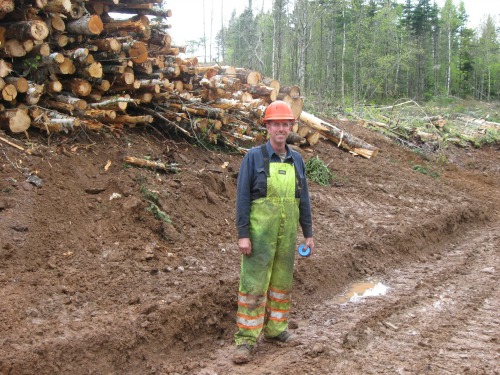
In the 2016 survey, roughly half reported operations that ran 31 to 40 weeks per year, with the other half of the operations running 41 to 52 weeks per year. Both coasts boast long seasons, with 62 per cent of BC Coast loggers running 41 to 52 weeks/yr, while 58 per cent of those in Atlantic Canada run similar seasons.
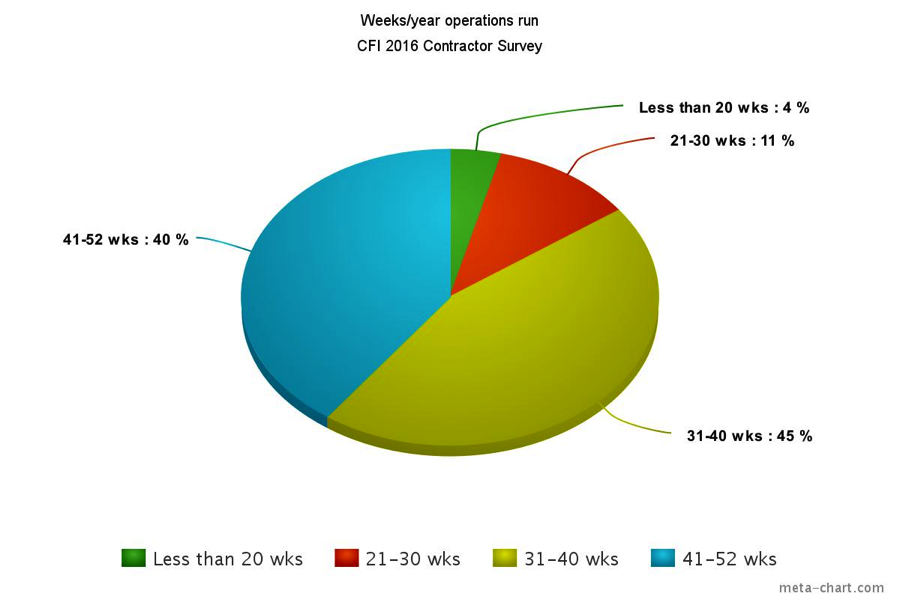
Only Alberta still seems to struggle with season length, with 60 per cent running 21 to 30 weeks, compared to the average of 11 per cent. However what they lack in working weeks they try to make up for in hours per week, with 27 per cent running 111 to 130 hrs/week and a similar portion running over 130 hrs/week.
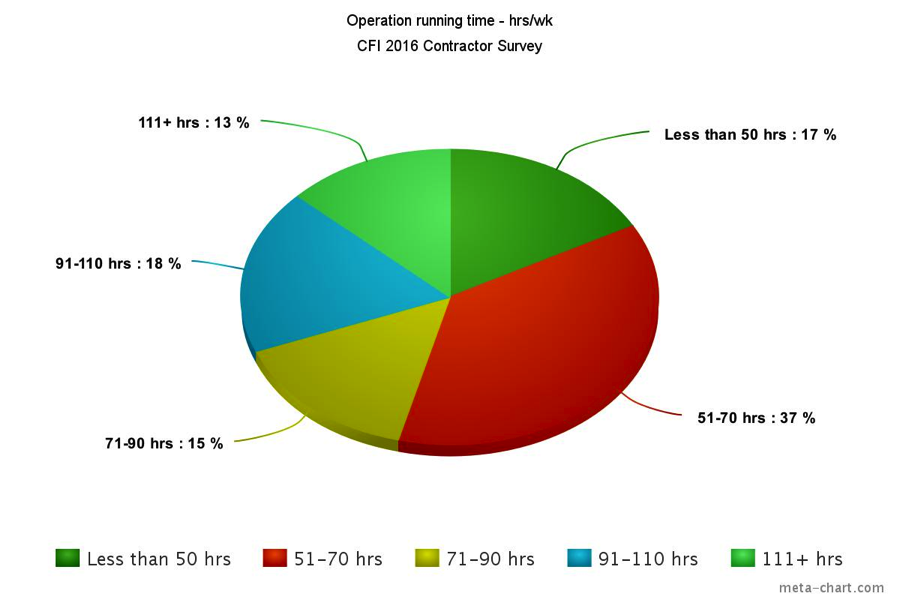
Personal workload
If crews are working more hours/week and weeks per year than days gone by, it doesn’t seem as if contractor workloads have eased off. On average, 61 per cent are working more than 55 hrs/wk, a number that climbs to 73% for the largest of contractors. In fact, as the chart shows, workload grows with company size – perhaps delegation is only a dream in the modern contractor world. In all categories however, at least half are working more than 55 hrs/wk.
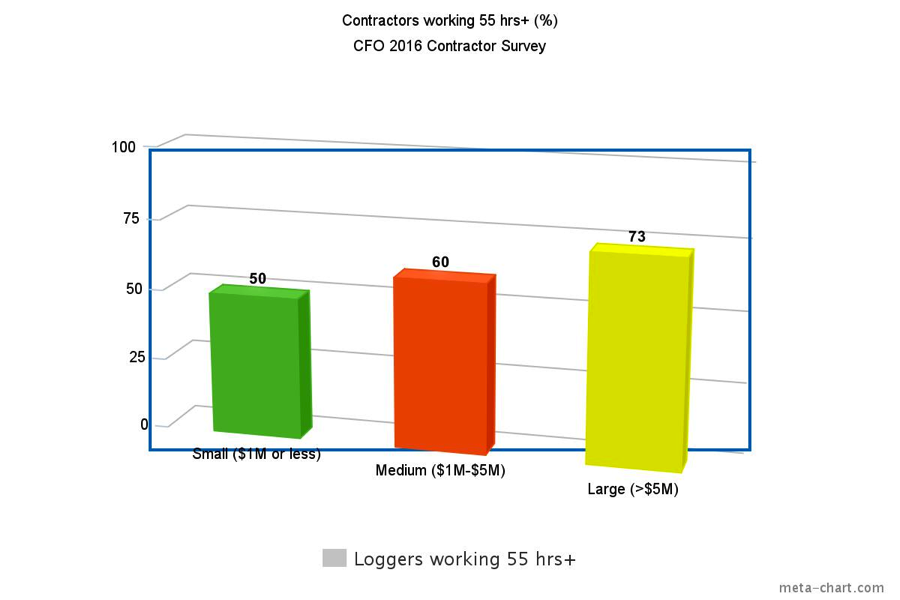
When it comes to life-work balance, only Quebec seems to have it figured out – Just 38 per cent are working over 55 hrs/wk (although another 25 per cent work 51-55 hrs/wk), with both Quebec and Atlantic Canada showing more than 50 per cent CTL loggers.
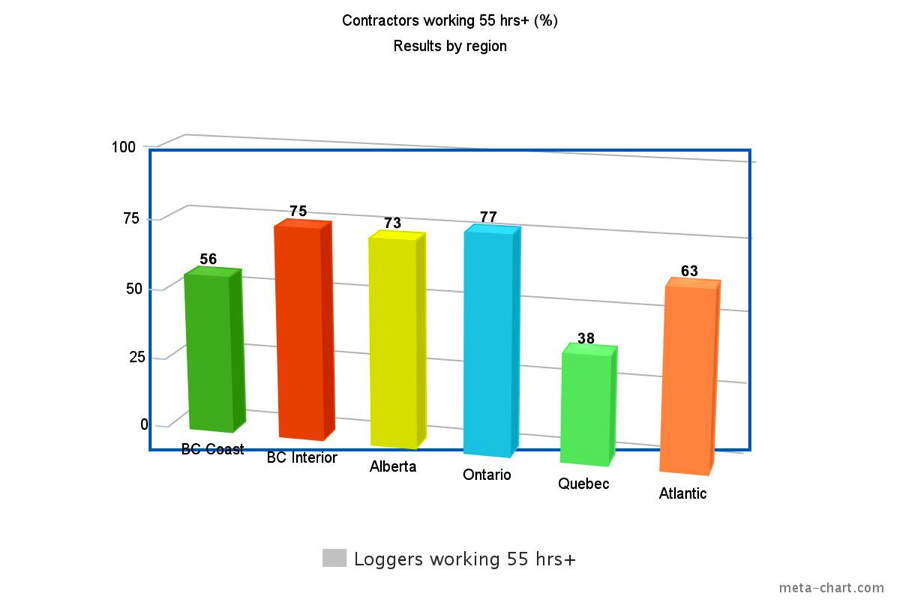
Also of interest, cut-to-length loggers were significantly less likely to work more than 55 hrs/wk than full-tree loggers (56% vs 76%).
Next week Survey Snippet #9 looks at fleet size by company size and region.
Missed the last Survey Snippet #7 on trends in logging costs? See it here.
Find more news for the CFI 2016 Contractor Survey on www.woodbusiness.ca and in our enews in the coming months, with a final digital report in late August and a summary in the Sept/Oct print issue. Be sure to subscribe to the enews to get every item.
The survey was conducted in April 2016 for Canadian Forest Industries by independent research firm Bramm & Associates, generating over 230 replies to a detailed list of questions. Respondents were distributed according to the geographic breakdown of the forest industry, with 50 per cent in Western Canada, 25 percent in Quebec, and the rest found in Ontario, Atlantic Canada, and central Canada. Within BC responses were almost evenly split between the BC coast and Interior. Many thanks to our sponsors for making the research possible – Hultdins, Stihl, Tigercat and Ponsse. Also made possible with support from the Ontario Media Development Corporation (OMDC).
Print this page